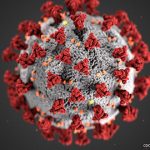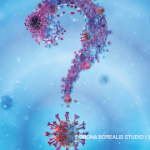Ethan Craig was not pleased.
As a reader of this column, you know that Dr. Craig is an assistant professor of clinical medicine in the Division of Rheumatology at the University of Pennsylvania and an associate editor of The Rheumatologist.
On this particular morning, however, he was the father of a 5-year-old who woke up with a cough. His son had recently started an in-person preschool and was now complaining that he wasn’t feeling well. Dr. Craig took to Twitter to recount his personal experience trying to get his son a COVID-19 test:
I call our occupational medicine [department] around 7 a.m. to figure out what should be done; of course, no one there. 9 a.m. still no word back; had to find someone to cover the clinic in the meantime … because darned if I’m exposing my patients and colleagues on the chance this is COVID.
There’s clear policy for what to do if a known close household contact has COVID, but what the heck do you do when a household contact is sick, and you can’t tell if it’s COVID or not? … So we try to get our son a COVID test. We … explain the situation. They agree to the test because it has bearing on our safety to work, but clinic not open yet. Call back at 8:30 a.m.
8:30 a.m. rolls around. Call clinic, and sit on hold for >30 minutes, only to get a nurse and be told they won’t order a test without a video visit. When can that be done? Who knows. Will contact on-call doc and see. 9:20 a.m. now. Still no word.
So now we sit and wait; I can’t go into work at this point, have missed at least a morning figuring this out, and even if I can go to work, my wife cannot work when caring for kids. … How, six months in, is it still THIS onerous to get tested?
I know Dr. Craig’s experience will resonate with many of you. Versions of this story have played out in living rooms and at kitchen tables across the country.
Dr. Craig knows he is in a fortunate position. He was never at risk of losing his job over a missed day of work. He had the option of working from home or calling upon family members to help. He also understood how to navigate the medical system to arrange for testing. But this is playing out very differently for millions of Americans every day who can’t navigate the rococo requirements for testing, or don’t have the luxury of missing a day of work to wait for a negative test.
Even now, almost a year after the first cases of COVID-19 were reported, it can be extraordinarily difficult to access rapid COVID testing. Why is this still the case, and how might rapid testing help us get through the pandemic?



